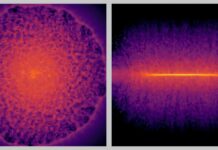After decades of fire suppression, a new 20-year study in the Sierra Nevada mountains reveals that regular, controlled burns don’t just reduce wildfire risk—they can actually increase a forest’s ability to store carbon over the long term. This counterintuitive finding, published in Ecological Applications, has critical implications for California’s climate goals and forest management strategies.
The Paradox of Fire and Carbon
For years, the debate over prescribed burning has centered on its immediate carbon emissions. Burning trees releases CO2, a greenhouse gas. However, this research demonstrates that repeated controlled fires promote forest health and productivity in ways that outweigh those short-term losses. The key is that regular burning helps maintain large, fire-resistant trees—ponderosa pines and sugar pines—while preventing the overgrowth of smaller, fire-prone species like incense cedar and white fir.
“We found that, over time, the productivity of unmanaged stands decreased due to competition and climate stress,” explains Yihong Zhu, the study’s lead author from UC Berkeley. “Meanwhile, prescribed burning helped maintain those large trees, eventually increasing the overall productivity of the forest.”
How It Works: Shifting Forest Dynamics
The study tracked forest plots subjected to different treatments—including prescribed burning, restoration thinning (removing smaller trees), and no intervention (control plots). Researchers carefully measured carbon storage in all components of the forest—from massive tree trunks to decaying pine needles.
The results were striking. While control plots initially stored more carbon, the plots subjected to repeated burning eventually caught up and even surpassed them in net productivity. This means the forest was pulling more CO2 out of the atmosphere than it was releasing.
“After the first burn, the productivity of those plots was low,” says John Battles, a UC Berkeley professor and senior author. “But by the third burn, the patterns had switched.”
The Accounting Challenge
Quantifying the carbon impact of each treatment was a massive undertaking. Researchers tracked every carbon pool in the forest, accounting for growth, decay, and emissions. This “massive accounting job,” as Battles calls it, revealed a critical shift in forest dynamics.
Fire suppression has led to the proliferation of dense undergrowth, creating a “fuel ladder” that allows small fires to quickly escalate into catastrophic crown fires. Prescribed burning reverses this process, thinning the understory and promoting the growth of fire-resistant trees.
Balancing Fire Risk and Carbon Storage
The study builds on previous research showing that combining prescribed burning with mechanical thinning is the most effective way to reduce wildfire hazard. However, that approach also has the highest carbon cost. The latest findings provide a roadmap for balancing these competing priorities.
For communities near inhabited areas or sensitive ecosystems like giant sequoia groves, a combination of burning and thinning may be necessary. But in deeper wilderness areas, prescribed burning alone may be a better option for maintaining stored carbon while improving forest health.
“We’ve got to get these treatments out there,” Battles emphasizes. “Some treatments might be better than others in certain situations, but now we’ve made the trade-offs explicit so we can pick the right approach.”
Ultimately, this research underscores the importance of proactive forest management in a changing climate. Prescribed burning isn’t just about preventing wildfires—it’s about ensuring that forests continue to act as vital carbon sinks for generations to come






























